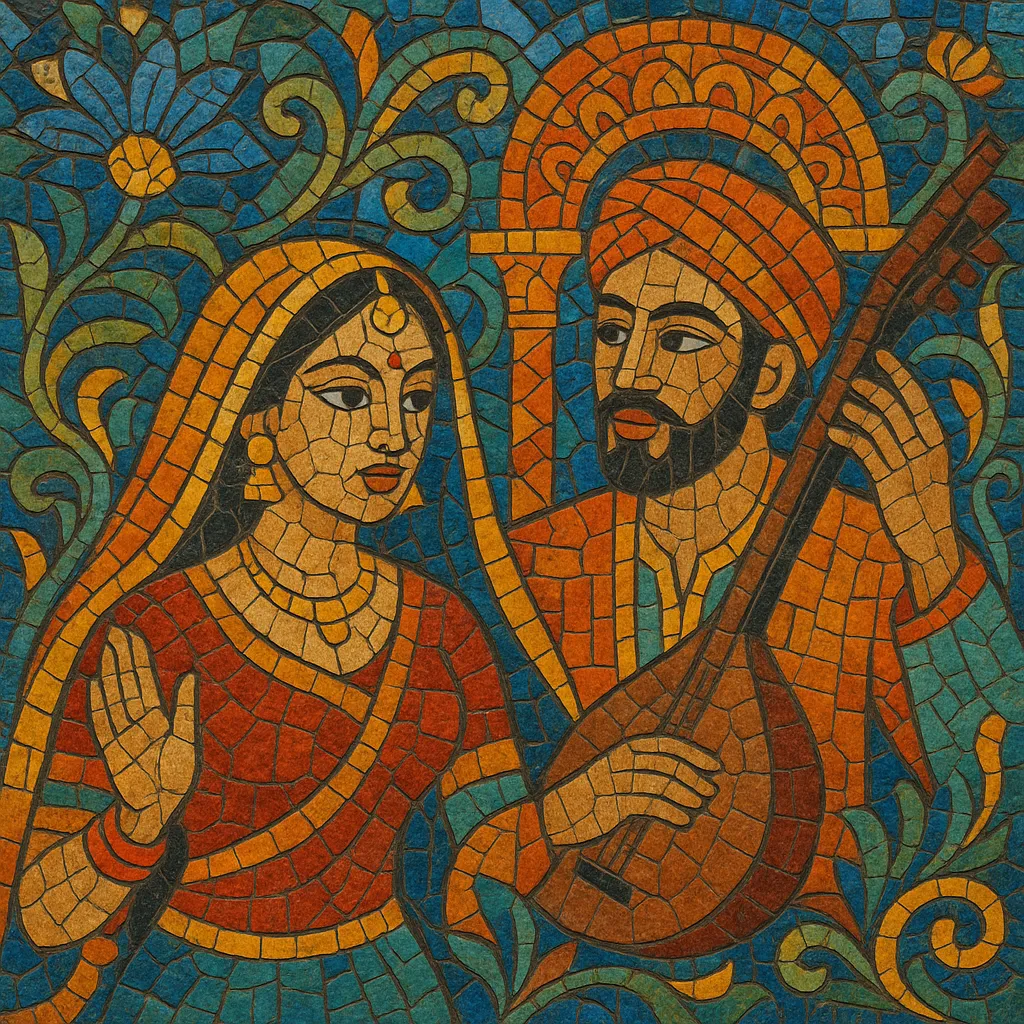Bollywood is the popular film-music tradition associated with Hindi-language cinema from Mumbai, India. It blends raga-based melodies and Hindustani vocalism with Western orchestration, jazz/big-band legacies, pop hooks, disco/funk grooves, rock energy, and contemporary electronic production.
Songs are typically designed for on-screen performance and storytelling, featuring lush arrangements, memorable refrains, and emotive playback singing. A common formal scheme is the mukhda (catchy refrain) and antara (stanza/verse) structure, often with instrumental preludes, interludes, and dance breaks.
Because it serves narrative and spectacle, Bollywood music ranges widely in mood—from romantic ballads and devotional pieces to high-energy dance numbers—and has continuously absorbed global influences while remaining rooted in Indian melodic and rhythmic aesthetics.
The advent of Indian talkies in 1931 (e.g., Alam Ara) immediately fused narrative film with song. Early composers drew on Hindustani classical, ghazal, qawwali, folk idioms, and theatrical traditions. As studios developed in Bombay (now Mumbai), orchestration grew more ambitious, blending Indian instruments (tabla, sitar, sarangi, bansuri) with string sections and brass influenced by Western classical and jazz/big-band practices.
Studio orchestras and music directors like Shankar–Jaikishan, S.D. Burman, and later R.D. Burman defined a signature sound: raga-informed melodies carried by plush harmonies, countermelodies, and inventive rhythm sections. Playback singing became the norm, with iconic voices (Lata Mangeshkar, Mohammed Rafi, Asha Bhosle, Kishore Kumar) shaping the emotional palette. International dance rhythms (mambo, rock ’n’ roll) entered alongside Indian talas.
Disco and funk strongly colored the era, merging four-on-the-floor beats and synth bass with Hindi melodies. R.D. Burman’s hybrid experiments and producers’ expanding use of synthesizers and drum machines modernized the dance number while keeping the mukhda–antara form.
Economic liberalization and music TV broadened reach. Composers like A.R. Rahman introduced state-of-the-art production, sampling, and world-fusion textures while preserving raga and tala sensibilities. Bhangra-styled grooves, romantic ballads, and glossy soundtracks became global calling cards for Bollywood.
Contemporary scores fluidly integrate EDM, hip hop, trap, and synth-pop with Indian ornamentation and poetic Hindi/Urdu lyricism. Remixes and reprises coexist with original compositions; cross-industry collaborations (other Indian-language cinemas) and independent scenes cross-pollinate. Despite constant change, Bollywood retains its core: narrative-driven, melody-first songs designed for cinematic performance and mass singability.
-
•
Choose raga flavor and tala/groove.
•Write a strong mukhda hook; sketch two antaras with lyrical development.
•Arrange with hybrid instrumentation and interludes.
•Produce with vocal-forward mix, supportive harmony, and cinematic dynamics.


